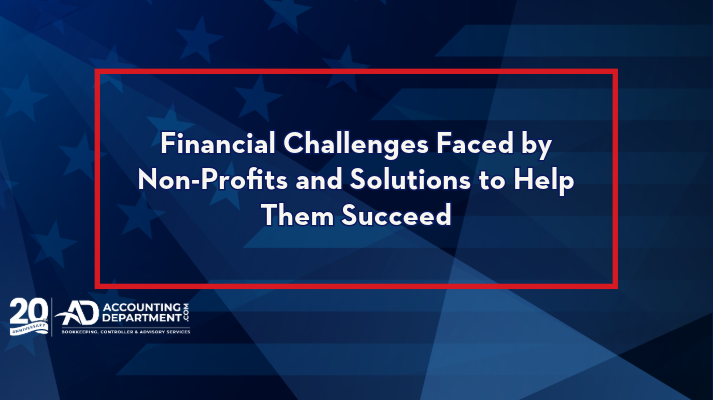
Effective methods to allocate costs for informed decision-making
A significant challenge facing many not-for-profit (NFP) organizations involves determining how much of their resources and expenses to allocate to their services, programs, and initiatives. Not-for-profits do not necessarily see returns on investment in the same way as for-profit businesses so they must find other means for tracking the sustainability of their operations.
Cost allocation is a method of categorizing expenses to better understand where an organization’s resources are being utilized. It can be straightforward when it comes to costs that are directly related to specific initiatives, such as programming. However, costs that cover more general purposes, such as overhead, can get more complicated.
Why Cost Allocation for Nonprofits Necessary?
Cost allocation is a critical process that not-for-profit organizations must undertake for various reasons. One of the most significant is the need to report on the organization’s efficient use of funds. In this context, cost allocation helps ensure that donors can track their contributions’ impact and ascertain whether they are being appropriately administered to support specific initiatives. Additionally, if an NFP receives grant money, it will likely have to provide regular accountings to the grantor organization. Cost allocation enables such organizations to provide detailed reports that break down the expenditure of the funds in a transparent and organized manner. It also allows NFPs to maximize grant dollars by providing a consistent methodology for allocating support costs that are not directly related to the grant or program, but provide support to all aspects of the organization.
Another key reason why cost allocation is vital for not-for-profit organizations is that it is often necessary for regulatory compliance. For instance, completing Form 990, a tax document that tax-exempt organizations file annually with the Internal Revenue Service (IRS), requires information obtained from allocating costs. Such documentation is crucial for NFPs to maintain their tax-exempt status and avoid penalties that may arise from noncompliance.
What Types of Costs Should a Nonprofit Organization Allocate?
NFPs should strive to undertake a thorough and comprehensive cost allocation process to ensure that their resources and expenses are effectively distributed across their various programs. Implementing appropriate methods, as described below, can help NFP organizations allocate nearly every type of expense that they incur.
- Direct vs. Indirect Costs
The biggest challenge in cost allocation involves costs that are not directly tied to particular programs or activities.
- “Direct costs” have a direct relationship to an initiative, so their allocation is straightforward. Examples of direct costs might involve a separate marketing campaign for a program or expenses associated with an event in support of that program.
- “Indirect costs” may benefit more than one program or the organization as a whole. Overhead costs, such as rent for an office and utilities, benefit all of an organization’s programs by providing the staff with a comfortable place to work. An organization’s website might constitute a single expense that supports multiple programs. Payroll expenses can benefit some or all programs, depending on each employee’s job duties.
- Personnel Costs
Expenses directly associated with payroll are relatively easy to allocate. This includes salary, benefits, and related costs. An organization that tracks how its employees spend their time can use that data to help allocate payroll costs.
Suppose, for example, that an employee keeps a daily time sheet in which they track their time in quarter-hour (15-minute) or tenth-of-an-hour (6-minute) increments.
One day, they work a total of eight hours:
- four of those hours, or 50% of their day, are spent working on Project A
- two hours, or 25%, spent on Project B
- one hour each working on Project C and administrative tasks
- = Their weekly salary is $1,000, or $200 per day.
The initial cost allocation for that day’s $200 payroll expense would therefore be:
- Project A: $100
- Project B: $50
- Project C: $25
- Indirect costs: $25
- Non-Personnel Costs
Non-personnel costs represent a critical expense for NFP organizations, and allocating such costs can present a significant challenge. These expenses, which include indirect non-personnel costs such as overhead expenses and general insurance coverage, are more difficult to allocate, making the ‘methods’ outlined below all the more important.
Costs associated with specific grants can also present additional concerns when it comes to cost allocation. Not-for-profit organizations must account for the use of grant funds in ways that align with the grant requirements while ensuring that cost allocation remains consistent across all programs.
What Cost Allocation Accounting Methods Can Nonprofit Organizations Use?
To overcome these complexities, not-for-profit organizations can use various methods for cost allocation. These methods can be applied to allocate indirect costs, including non-personnel costs and personnel costs that cannot be allocated to a specific project.
- Per Employee Hour Cost Allocation
Also known as the “full-time equivalent (FTE) method”, this allocates indirect costs using the same proportions as employees’ time records. Proportions would be based on all employee records over the length of the organization’s reporting period, such as a month or quarter.
- Per Dollar of Salary Cost Allocation
This method would allocate indirect expenses based on the proportion of personnel costs allocated to each project over the month or quarter.
- Per Square Foot Cost Allocation
This method could work for organizations that have dedicated space for different projects. The allocation would be based on the percentage of total square footage used by each project.
- Per Employee Cost Allocation
The number of employees involved in each project would determine the allocation using this method. Each project would be allocated in proportion to its number of employees.
Technology Ensures Appropriate Cost Allocations
Cost allocation can be confusing and time-consuming. MAXIS® by Freed Maxick is a high-tech outsourced accounting solution that can automate certain allocations and help you determine which methodology will maximize your organization’s program costs and grant dollars. A custom dashboard collects data and captures the organization’s financial performance in real-time to provide measurable insights and support appropriate allocations.
The Not-For-Profit team at Freed Maxick can help your organization determine the best cost allocation methodology for your nonprofit organization. For a complimentary consultation, contact Holly Hejmowski, Director of Assurance and Advisory Practice, directly at HHejmowski@FreedMaxick.com.
Discover more from reviewer4you.com
Subscribe to get the latest posts to your email.






